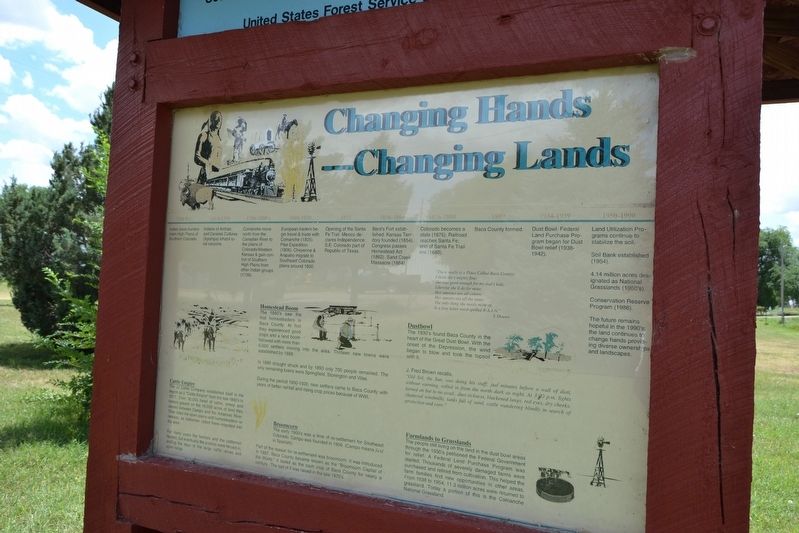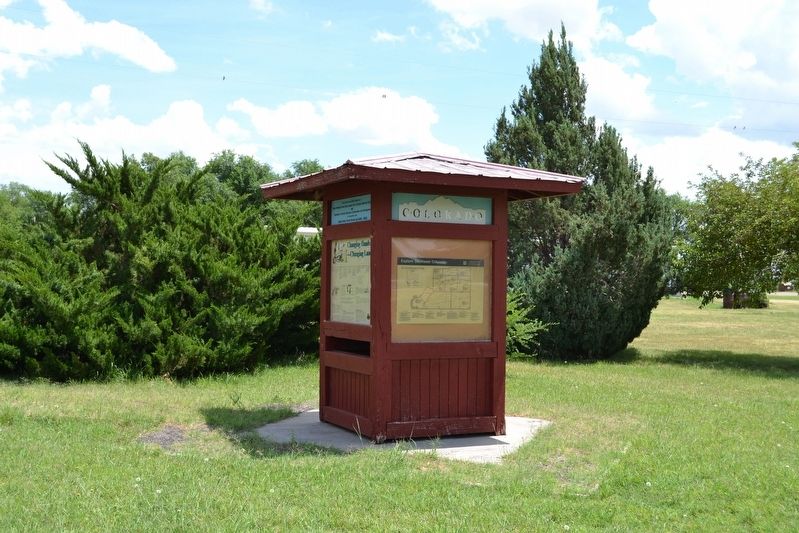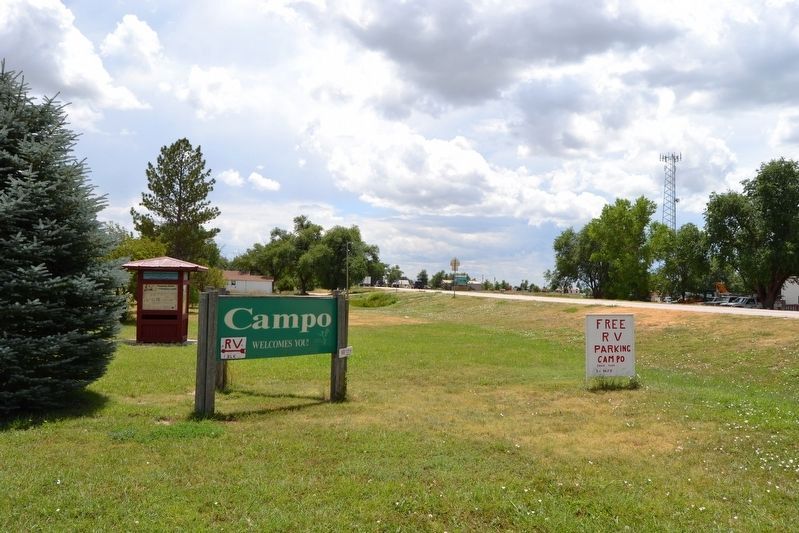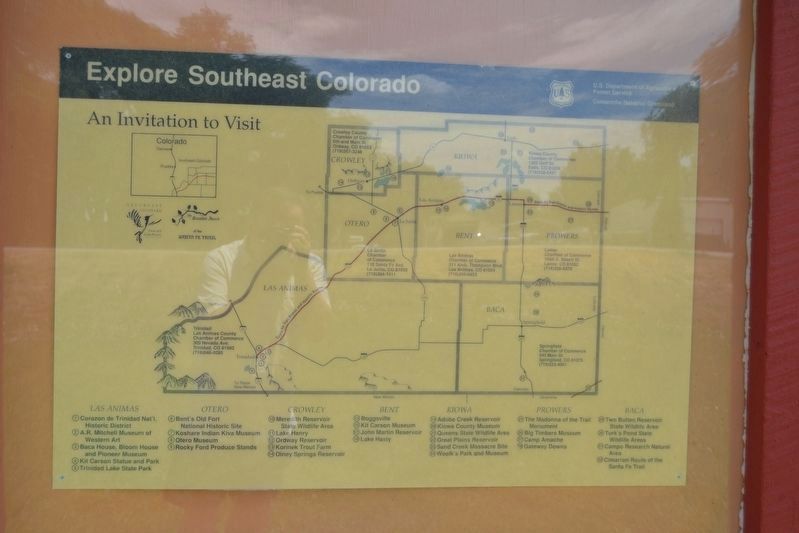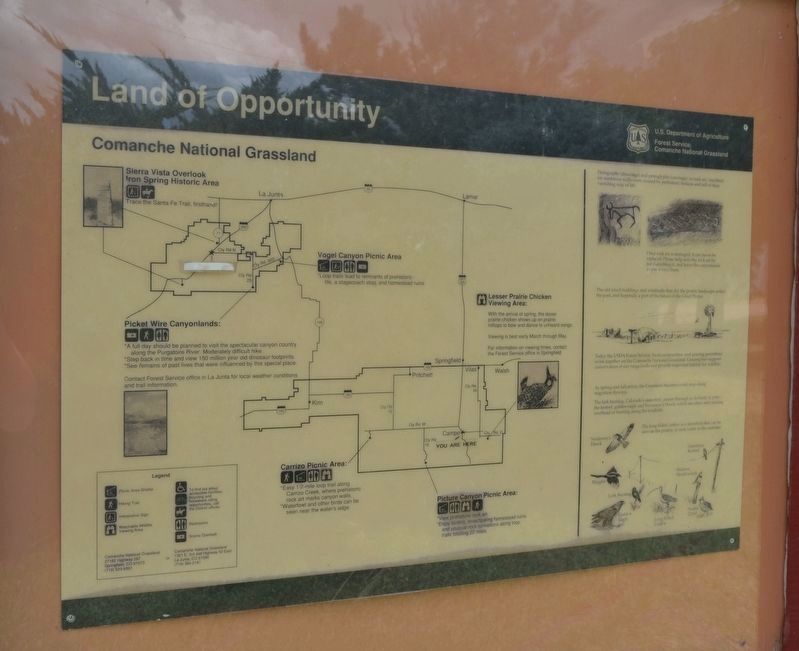Campo in Baca County, Colorado — The American Mountains (Southwest)
Changing Hands --- Changing Lands
"There really is a Place Called Baca County;
I think sheís mighty fine;
She was good enough for my dadís kids;
Likewise sheíll do for mine;
Her sunrises are all colors;
Her sunsets are all the same;
The only thing she needs more of;
Is a four letter word spelled R-A-I-N."
I. Osteen
Cattle Empire
The JJ Cattle Company established itself in the region as a “Cattle Empire” from the late 1860ís to 1917. Over 30,000 head of cattle, sheep and horses grazed on the 16,000 acres of land they owned between Campo and the Arkansas River. They ruled the open plains until homesteaders--or nesters, as cattlemen called them--migrated into the area.
For many years, the farmers and the cattlemen feuded, but eventually the prairies were fenced in, ending the days of the large cattle drives and open range.
Homestead Boom
The 1880ís saw the first homesteaders in Baca County. At first they experienced good crops and a land boom followed with more than 6,000 settlers moving into the area. Thirteen new towns were established by 1888.
In 1889 drought struck and by 1893 only 700 people remained. The only remaining towns were Springfield, Stonington and Vilas.
During the period 1900-1920, new settlers came to Baca County with years of better rainfall and rising crop prices because of WWI.
Broomcorn
The early 1900ís was a time of re-settlement for Southeast Colorado. Camp was founded in 1909. (Campo means field in Spanish).
Part of the reason for re-settlement was broomcorn. It was introduced in 1887. Baca County became known as the “Broomcorn Capital of the World.” It lasted as the cash crop of Baca County for nearly a century. The last of it was raised in the late 1970ís.
Dustbowl
The 1930ís found Baca County in the heart of the Great Dust Bowl. With the onset of the Depression, the wind began to blow and took the topsoil with it.
J. Fred Brown recalls,
"Old Sol, the Sun, was doing his stuff; just minutes before a wall of dust without warning, rolled in from the north dark as night. At 3:00 p.m. lights turned on but to no avail...dust sickness, blackened lungs, red eyes, dry cheeks, shattered windmills, tanks full of sand, cattle wandering blindly in search of protection and care."
Farmlands to Grasslands
The people still living on the land in the dust bowl areas through the 1930ís petitioned the Federal Government for relief. A Federal Land Purchase Program was started. Thousands of severely damaged farms were purchased and retired from cultivation. This helped farm families find new opportunities in other areas. From 1938 to 1954, 11.3 million acres were returned to grassland. Today a portion of this is the Comanche National Grassland.
7500 B.C.†††††Indian bison hunters roam High Plains of Southern Colorado.
AD 0-1350†††††Indians of Archaic and Ceramic Cultures (Apishipa) inhabit local canyons.
1700-1800ís†††††Comanche move north from the Canadian River to the plains of Colorado/Western Kansas & gain control of Southern High Plains from other Indian groups (1739).
1800-1820†††††European traders begin travel & trade with Comanche (1805). Pike Expedition (1806). Cheyenne & Arapaho migrate to Southeast Colorado plains around 1800.
1821†††††Opening of the Santa Fe Trail. Mexico declares Independence. S.E. Colorado part of Republic of Texas.
1836-1864†††††Bentís Fort established. Kansas Territory founded (1854). Congress passes Homestead Act (1862). Sand Creek Massacre (1864).
1876-1880†††††Colorado becomes a state (1876). Railroad reaches Santa Fe; end of Santa Fe Trail (1880).
1889†††††Baca County formed.
1934-1939†††††Dust Bowl. Federal Land Purchase Program began for Dust Bowl relief (1938-1942).
1950-1990†††††Land Utilization
Programs continue to stabilize the soil. Soil Bank established (1954). 4.14 million acres designated as National Grasslands (1960ís). Conservation Reserve Program (1986). The future remains hopeful in the 1990ís; the land continues to change hands providing diverse ownerships and landscapes.
Erected by United States Forest Service.
Topics. This historical marker is listed in these topic lists: Agriculture • Native Americans • Settlements & Settlers.
Location. 37° 6.182′ N, 102° 34.732′ W. Marker is in Campo, Colorado, in Baca County. Marker can be reached from the intersection of S. Main Street (U.S. 287) and 6th Street, on the right when traveling north. Touch for map. Marker is in this post office area: Campo CO 81029, United States of America. Touch for directions.
More about this marker. The kiosk project was partially funded by a State Historical Fund Grant Award from Colorado Historical Society; and Southeast Colorado Resource Conservation and Development in cooperation with United States Forest Service and USDA - NRCS.
Also see . . . Baca County History. A blog with stories on the history of Baca County. (Submitted on August 2, 2017.)
Credits. This page was last revised on July 1, 2022. It was originally submitted on August 2, 2017, by Duane Hall of Abilene, Texas. This page has been viewed 480 times since then and 20 times this year. Photos: 1, 2, 3, 4, 5. submitted on August 2, 2017, by Duane Hall of Abilene, Texas.
